(Articles Main) (Home)
Weiss GE-9a -- Finally on Cover
Ever since William Weiss published his book on New York foreign mail (NYFM) killers of the 1870s1, I have remained on constant lookout for examples of killers, presumed to be the NYFM killers, that had not yet been reported on cover. This article presents the first report of an on-cover example of Weiss type GE-C9a. As I have written in previous NEWS articles2,3, I believe that many if not most of these missing killers are associated with mail processed in the circular mail room (NYCM) before delivery to the foreign mail division for processing. The style of these missing killers for the most part differs from traditional NYFM geometrics in that their lines are thicker and involve curves more than angles. Weiss reported type GE-C9 used on a foreign mail circular dated 04/30/1878. Because of its similarity to GE-C9 (Figure 1), Weiss elected to classify GE-C9a (Figure 2) as a sub-variety of GE-C9 in contrast to previous students of NYFM.4 GE-C9 is typically found on the 1875 Banknote issues (especially Scott #178, an example of which, courtesy of John Donnes, is pictured in Figure 3), while off-cover examples of GE-C9a are reported on the 1873 issues.
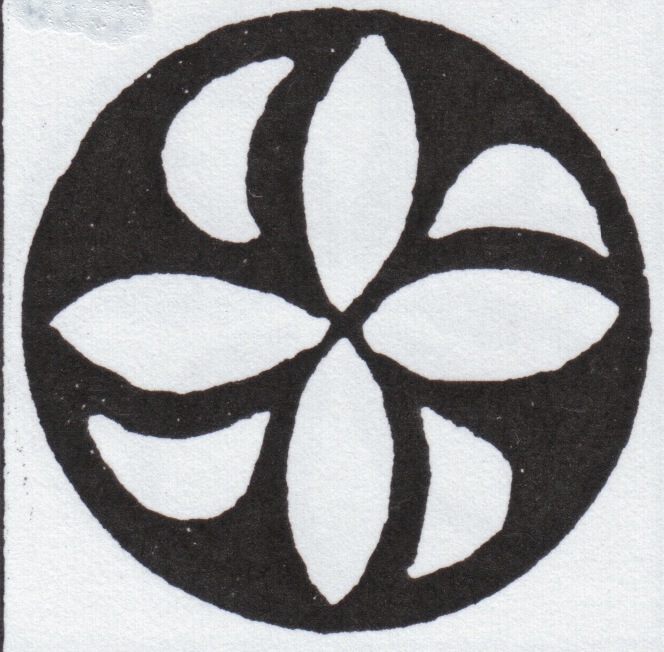
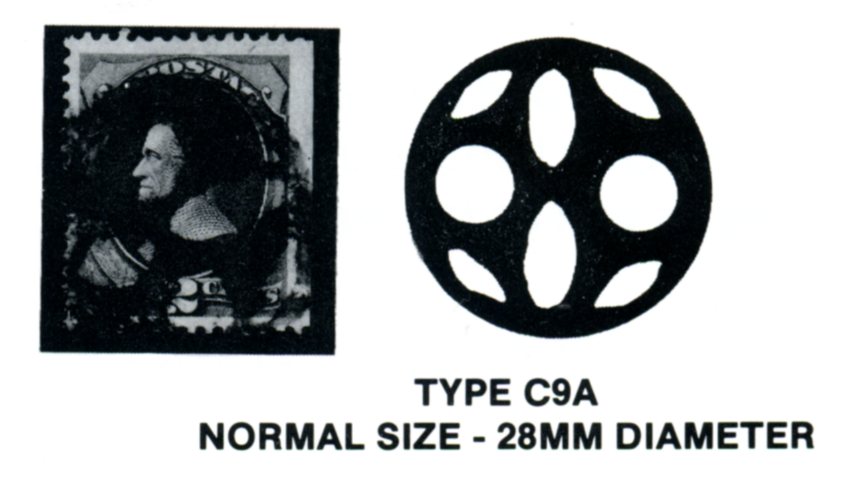
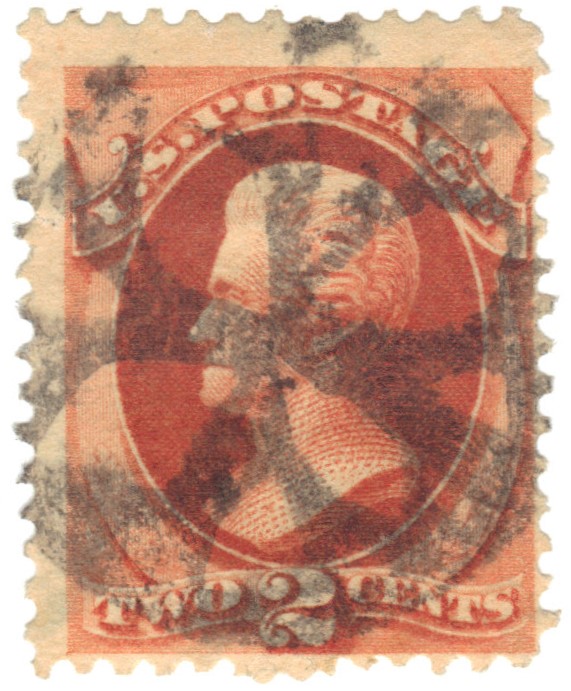
Figure 1 Figure 2 Figure 3
The newly reported example of GE-C9a on cover is illustrated in Figure 4 (killer detail) and Figure 5. This is a locally mailed pre-printed private mailing card for I. Tanenbaum & Co., General Insurance Brokers, New York. The reverse (not shown) announces the removal of the firm’s offices to new quarters and is dated April 10, 1875, three years earlier than the Weiss-reported example of GE-C9. The 1˘ stamp, a damaged Scott #156, bears two overlapping strikes of GE-C9a, the leftmost distinct and nearly complete, the rightmost much lighter. This on-cover example measures 26mm, smaller than what Weiss reports. However, this strike appears worn, so the size difference may simply be incidental to its length of use as a killer. Also notable is the killer’s use on a private mailing card. Such cards are quite scarce. As is typical for New York Circular Mail, the killer is not duplexed to a postmark. Apparently the NYC post office treated private mailing cards differently than government postal cards. This may be due to the fact that there were no standards for such cards in terms of size or format.
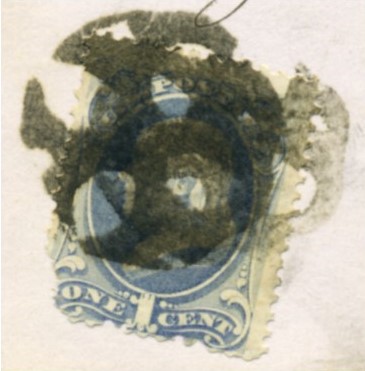
Figure 4
So, now we have an example of a cancel, long presumed to be a NYFM, but not yet proven on cover, GE-C9a, confirmed on a NYCM cover. This does not preclude the foreign mail use of this killer. Indeed, off-cover examples of GE-C9a exist in red ink, an almost exclusive indicator of foreign mail usage. Moreover, these red examples typically are more distinct and less worn, perhaps indicating an earlier period of use. Did GE-C9a start its life exclusively applied to foreign destination mail only to be retasked to cancel circular mail? Lacking confirming covers we may never know. As has been previously demonstrated2,5, the line between NYFM and NYCM is a blurred one.
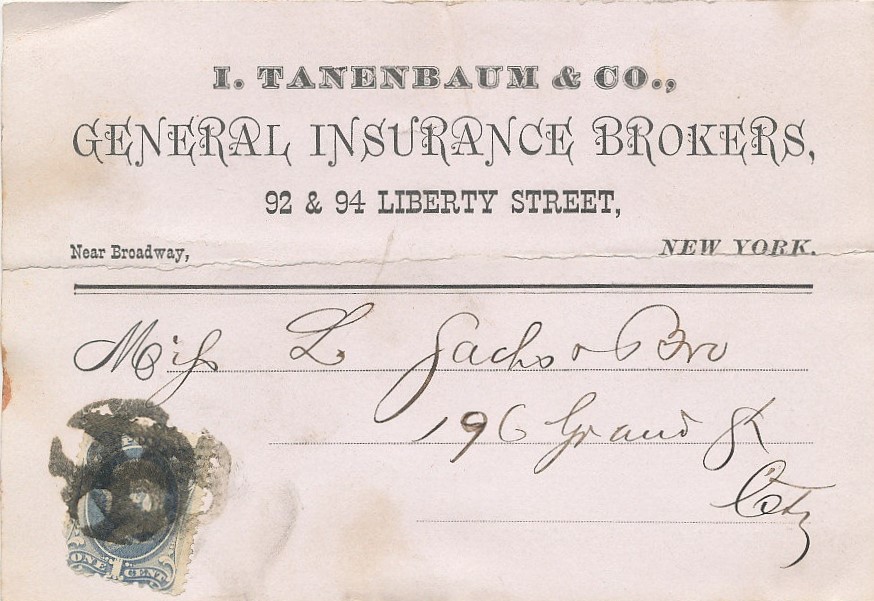
Figure 5